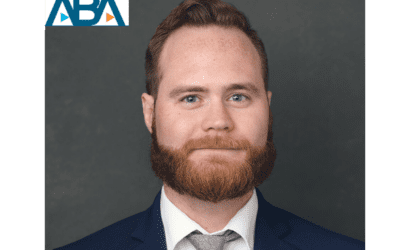More than 15 years have passed since the Mental Health Parity and Addiction Equity Act imposed requirements on health insurers and health benefit plans to provide equal coverage for treatment of mental health conditions and substance-use disorders.[1]
Although there are no explicit provisions in the act creating a private right of action to redress claimed parity violations, courts have recognized that the MHPAEA violations may be redressed by Section 502(a)(3) of the Employee Retirement Income Security Act.[2]
But until recently, no court has clearly explained the elements necessary to state a cause of action under the MHPAEA, an omission that was rectified by the U.S. Court of Appeals for the Tenth Circuit in a ruling issued on Nov. 21.
In E.W. v. Health Net Life Insurance Co.,[3] the Tenth Circuit clarified the elements of and pleading requirements necessary to establish a MHPAEA violation.
E.W. involved a claim for residential mental health treatment benefits that had been denied. After exhausting plan appeals, the plaintiffs filed suit against their health insurer alleging a claim under ERISA for an improper benefit denial, along with a separate claim alleging a MHPAEA violation.
The plaintiffs alleged that the defendant had violated the MHPAEA by imposing more stringent coverage criteria to the behavioral health services at issue than would be applied to analogous medical/surgical services. However, the U.S. District Court for the District of Utah granted a motion to dismiss the MHPAEA claim brought by Health Net, and the court also upheld the defendant’s benefit determination.
Although the Tenth Circuit affirmed the district court’s ruling on the benefit claim, it reversed the dismissal of the MHPAEA claim and remanded the matter for further proceedings.
The court observed that none of the federal circuits had determined what must be pled to state a viable MHPAEA claim, although some lower courts had developed a test that required a complaint to allege the following:
(1) identify a specific treatment limitation on mental health benefits; (2) identify medical/surgical care covered by the plan that is analogous to the mental health/substance abuse care for which the plaintiffs seek benefits; and (3) plausibly allege a disparity between the treatment limitation on mental health/substance abuse benefits as compared to the limitations that defendants would apply to the covered medical/surgical analog.[4]
At oral argument, the Tenth Circuit expanded that list somewhat, and ruled that a complaint alleging a MHPAEA violation needs to:
- Plausibly allege that the relevant group health plan is subject to the MHPAEA;
- Identify a specific treatment limitation on mental health or substance-use disorder benefits covered by the plan;
- Identify medical or surgical care covered by the plan that is analogous to the mental health or substance-use disorder care for which the plaintiffs seek benefits; and
- Plausibly allege a disparity between the treatment limitation on mental health or substance-use disorder benefits as compared to the limitations that defendants would apply to the medical or surgical analog.
Each of those requirements was then explained further.
First, the court pointed out that the MHPAEA applies to a group health plan, or health insurance coverage offered in connection with such a plan.[5] The MHPAEA also defines the meaning of the terms “group health plan” and “health insurance coverage.”[6]
Thus, the first pleading requirement necessitates the plaintiffs to allege the benefits at issue are derived from a benefit plan governed by the MHPAEA.
With respect to the second element, treatment limitations are defined by the statute as well,[7] and include both quantitative limitations, which are expressed in a number such as the number of visits to a provider that are covered, as well as nonquantitative treatment limitations, or NQTLs.[8]
Plaintiffs alleging MHPAEA violations must also compare the treatment limitations applied to behavioral health care by the benefit plan to analogous forms of treatment for other conditions or services covered by the benefit plan.
While the MHPAEA does not explicitly require such a comparison, the court found such a requirement was implied in the same manner as allegations of disparate treatment are required in employment discrimination claims.
Finally, the fourth element, according to the Tenth Circuit’s opinion, “zero[es] in on disparities in limitations applied to benefits for medical or surgical care versus those applied to benefits for mental health or substance-use disorder treatment.”
Such limitations may be facial, i.e., the benefit plan includes a specific plan limitation or exclusion for mental health treatment that is not also applied to medical and surgical treatment. Alternatively, they may be as-applied, meaning that while the plan terms may appear facially comparable, the plan applies limitations differentially in operation.
The court focused on the plaintiffs’ allegations of an as-applied violation of the MHPAEA. The court ruled the allegations in the plaintiffs’ complaint were sufficient.
This was because the plaintiffs alleged facts showing the criteria utilized by the defendant to evaluate the medical necessity for residential behavioral health treatment capture acute conditions such as “a sudden change in a person’s health status” that “require[es] prompt medical attention” for a limited duration. However, by the plan’s own definition, residential treatment is less acute.
The Tenth Circuit also found the complaint adequately alleged that a residential behavioral health treatment center is analogous to a skilled nursing facility.
The court examined the MHPAEA regulations issued by the U.S. Department of the Treasury, the U.S. Department of Labor, and the U.S. Department of Health and Human Services, which define what types of medical and surgical care are analogous to a residential treatment center.
The regulations specify six benefit classifications to which parity requirements apply: inpatient, in-network; inpatient, out-of-network; outpatient, in-network; outpatient, out-of-network; emergency care; and prescription drugs.[9] The regulations further specify that as to NQTLs, a plan
may not impose a [NQTL] with respect to mental health or substance use disorder benefits in any classification unless … any processes, strategies, evidentiary standards, or other factors used in applying the [NQTL] to mental health or substance use disorder benefits in the classification are comparable to, and are applied no more stringently than, the processes, strategies, evidentiary standards, or other factors used in applying the limitation with respect to medical/surgical benefits in the classification.[10]
Thus, the appropriate comparison is between medical or surgical care and care for mental health or substance-use disorders that fall within the same classification.
The court determined the regulations specifically identified skilled nursing facilities and made it clear that if such facilities are classified as in-patient, then residential treatment must be similarly classified, and the same criteria applied to determine the medical necessity for each treatment.
Because the plaintiffs alleged that Health Net’s coverage requirements for admission into a skilled nursing facility did not incorporate acute criteria, the court held the plan could not require satisfaction of acute criteria for coverage of treatment in a residential treatment facility.
While the defendant maintained that plaintiff’s allegations concerning differential criteria for skilled nursing were conclusory and untrue, the court determined that the complaint contained factual allegations that it was required to accept as true for ruling on a motion to dismiss under well-accepted pleading standards.
Moreover, the plaintiffs asserted they had requested Health Net’s coverage criteria for skilled nursing facilities but were rebuffed.
Finally, Health Net maintained that its criteria for coverage of residential behavioral health treatment met MHPAEA requirements because they were consistent with evidentiary standards.
Health Net’s argument was based on a safe harbor described in the regulations in which a NTQL would meet MHPAEA requirements if such criteria were evidence-based as to the applicable standard of care. The court rejected that argument because it would require the court to make a finding without hearing evidence that the defendant’s criteria met generally accepted standards of care.
While the ruling in E.W. was a tremendous victory for the plaintiffs, overcoming a motion to dismiss is not the same as winning the lawsuit. The E.W. plaintiffs must still overcome tremendous hurdles before they can secure a judgment, especially since the court issued a parallel finding that the benefit denial was not unreasonable and therefore not an abuse of discretion.
However, since this is the first federal appellate ruling setting forth the elements of a MHPAEA claim, it will obviously influence other courts that will inevitably address this issue in the future. The court’s distillation of the requirements plaintiffs must plead to establish a MHPAEA claim offers guidance both to plaintiffs and defendants in prospective litigation.
The key to this ruling was the court’s focus on classifications for comparison of medical or surgical and behavioral health services.
If a plan imposes more stringent requirements on participants and beneficiaries seeking coverage for mental health treatment, an MHPAEA violation is likely to be found. Plans will also have to justify their use of criteria that they claim to represent consensus expert opinion as to generally accepted standards of care.
Finally, while the issues are more clear-cut in situations that involve a facial violation of the MHPAEA, the Tenth Circuit’s analogy to employment discrimination claims is apt.
Discrimination cases involving direct evidence of discrimination are rare, but plaintiffs can also succeed in proving discrimination when they are able to establish disparate treatment or disparate impact on what might otherwise be viewed as a facially neutral application of an employment policy.
Likewise, the E.W. ruling opens the door to plaintiffs who have been denied coverage for behavioral health treatment to prove a mental health parity violation, and thus achieve the MHPAEA’s goal of equal coverage for all conditions.
Mark DeBofsky is a shareholder at DeBofsky Law Ltd.
This article was first published by Law 360 on November 29, 2023.
[1] 29 U.S.C. § 1185a.
[2] 29 U.S.C. § 1132(a)(3).
[3] E.W. v. Health Net Life Ins. Co., 2023 U.S. App. LEXIS 30879, 2023 WL 8042746 (10th Cir. November 21, 2023).
[4] Citing David P. v. United Healthcare Ins. Co., No. 2:19-cv-00225, 2020 WL 607620, at *15 (D. Utah Feb. 7, 2020) (unpublished); see also Annemarie O. v. United Healthcare Ins. Co., No. 1:20-cv-164, 2021 WL 2532947, at *2 (D. Utah June 21, 2021) (same) (unpublished); Heather E. v. Cal. Physicians’ Servs., No. 2:19-cv-415, 2020 WL 4365500, at *3 (D. Utah July 30, 2020) (same) (unpublished); James C. v. Anthem Blue Cross & Blue Shield, No. 2:19-cv-38, 2020 WL 3452633, at *2 (D. Utah June 24, 2020) (same) (unpublished); Nancy S., 2020 WL 2736023, at *3 (same); Ryland v. Blue Cross Blue Shield Healthcare Plan of Ga., No. CIV-19-807, 2020 WL 6531239, at *2 (W.D. Okla. July 17, 2020) (same) (unpublished).
[5] 29 U.S.C. § 1185a(a)(3)(A). [6] 29 U.S.C. §§ 1191b(a)(1), (b)(1). [7] 29 U.S.C. § 1185a(a)(3)(A)(ii). [8] See 29 C.F.R. § 2590.712(a). [9] 29 C.F.R. § 2590.712(c)(2)(ii)(A). [10] 29 C.F.R. § 2590.712(c)(4)(i).







